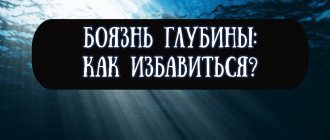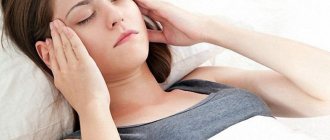Ailurophobia (galeophobia, gatophobia) is a type of zoophobia, an obsessive fear of cats. Softness, gracefulness and affection are the qualities that are most often attributed to cats. However, the outwardly pretty animal is naturally endowed with sharp claws and fangs. A cat's predatory skills, ability to attack and ability to aggressively defend itself can instill fear in a person, which over time turns into a persistent phobic disorder. An intense and uncontrollable fear of cats is called ailurophobia, galeophobia or gatophobia.
Ailurophobia - fear from childhood
This type of phobia can appear at any age, but most often the fear begins to form in childhood..
The main causes of ailurophobia:
- Personal negative experience with cats. The child’s psyche can be negatively affected by both the unpleasant painful sensation from a bite or scratch, and severe fear after an unexpected aggressive reaction of the animal to the child’s desire to play.
- Negative associations. In this case, the irrational fear is not associated with the cat, but with memories of the unpleasant consequences of communicating with this animal. For example, the child was very strongly scolded by his parents or there was a need to see a doctor, where the child had to endure frightening and painful procedures.
- Excessive emotionality and impressionability of a person. A person who is too suspicious can be left with an indelible impression by someone’s story about the experience of a cat attack and its consequences.
Incorrect actions by parents can also perpetuate children’s fear. When warning their children, mothers often focus their child’s attention only on the fact that the animal may unexpectedly bite or scratch. As a result, the baby develops a false idea about cat habits. The child sees only a threat in the animal, although in reality it is not the cat itself that is dangerous, but the improper handling of it.
Sources of concern
Although the most commonly mentioned aspect of the fear of cats is their possible attack, ailurophobia does not end there. A person can adequately assess the likelihood of aggression from an animal, but fear them based on other parameters. Here are the main reasons why people are afraid of these pets:
- fear of damage caused by contact with a cat - scratches, bites;
- infection from a cat with any disease - a virus, a parasite - due to damage or simply in the process of stroking;
- mystical fear of cats, associated with belief in their otherworldly abilities, can apply only to black cats or to all of them at once, since there are beliefs that they are associated with dark forces;
- an unreasonable, at first glance, fear, when a person cannot even tell himself why he is afraid of cats, but they cause him an inexplicable panic.
In all these cases, it is quite possible to understand that there is no real danger and the cat will not actually bring the troubles that are expected from it. But in a state of panic, a person is not able to think coherently, since his brain is occupied with only one thought - to quickly hide from the source of fear. For certain reasons, cats are recognized by ailurophobe as deadly , and the body reacts accordingly - preparing for salvation or death.
Getting rid of such an irrational fear can be difficult and will require the help of a specialist. If this is not yet possible, then you should start by determining the causes of aclurophobia.
Ailurophobia and superstitious fear
Fear of cats is not always associated with a reluctance to get physically injured. Superstitious fear may be hidden under an anxiety disorder. Since ancient times, many cultures have had an ambiguous attitude towards cats. They were both revered and feared. There are many legends and signs associated with this animal.
The ancient Egyptians considered the cat one of the hypostases of the Sun God - Ra . The Japanese saw cats as patrons of trade; animals were kept under the emperors and were endowed with the same rights as courtiers. At the same time, cats were credited with a tendency toward vampirism and the ability to contact otherworldly forces. The Slavs also believed that animals were capable of communicating with incorporeal entities. To this day, people believe that the cat is able to determine the geopathogenic zone and feeds on negative energy. You can often hear that an animal can treat its owner for various diseases.
The physical structure of a cat is such that the animal is able to land on its limbs and avoid serious injury when falling from a height. Cats see well in the dark and can move silently . The animal is freedom-loving and does not need a strong emotional connection with a person. All these features reinforce the superstitious fear of an impressionable person, as a result of which he develops a persistent dislike for cats.
The most fearful animal is a black animal, but, according to the theory of anthropologists, this fear is genetic, because in ancient times, in the absence of light, it was impossible to see a dark-colored predator.
Psychological attitude in the fight against fear
A person may avoid felines or only black cats. Fear of cats is a phobia that needs to be treated.
Typically, psychotherapists do not take phobias seriously and simply prescribe the patient a standard course of sedatives. This therapy gives temporary results. After a course of treatment, fear may return.
Treatment with a psychotherapist
People who are driven to nervous exhaustion usually turn to a psychotherapist. If the patient considers cats part of the mystical world and is afraid of them, the doctor will diagnose bipolar disorder or schizophrenia. If fear is not treated, the patient's condition may worsen.
Experts use several methods to combat the fear of cats:
- Hypnosis is the fight against a phobia on an unconscious level. A psychotherapist who knows this technique will help a person cope with fear. The results are usually permanent. During a hypnosis session, the patient is instilled with a positive assessment of the object of fear.
- Reaction burnout is a common method. Subject is instructed to interact with cats as often as possible. This leads to the formation of new protective mechanisms. The subconscious remembers that fear was overcome.
- The cognitive-behavioral method is the preparation of the patient to independently overcome the phobia. The specialist teaches how to recognize the signs of an impending panic or panic attack. They need to be changed to positive thoughts.
- Psychoanalysis is a search for the causes of fear and ways to combat it. This method takes a lot of time, but gives lasting results.
The main thing in treating a phobia is to tune in to a positive outcome. Self-medication can also help. Use reaction burnout technique.
Drug treatment
If work with a psychologist or psychotherapist does not produce results, the patient is prescribed medication. It is based on taking medications that relieve panic attacks and strengthen the nervous system.
Patients with ailurophobia are prescribed:
- beta blockers - relieve psycho-emotional symptoms, reduce the manifestations of physical symptoms during a meeting with an object that causes fear;
- antidepressants - reduce negative reactions to cats, normalize metabolic processes associated with the production of serotonin;
- tranquilizers - relieve severe attacks of panic and hysteria, but can be addictive;
- antipsychotics - help cope with obsessive thoughts about cats and the constant fear of meeting them.
Medicines are prescribed by a doctor. The pharmacy sells drugs by prescription. Drug therapy is used in severe cases.
Tablets to combat fear can only be used as prescribed by a doctor.
Phytotherapy
To relieve anxiety, it is recommended to take herbal medicines. They have fewer side effects and are freely available in pharmacies. You can carry out this treatment yourself, but it is recommended to consult a doctor.
People suffering from phobias can drink a soothing herbal decoction. It is prepared from chamomile flowers, mint, lemon balm, valerian roots and motherwort. Take in small portions before meals. The course of treatment is 1-2 months.
In order to live normally, without fear, try to cope with the phobia yourself or consult a psychotherapist. If parents notice signs of a fear of cats in their child, they should contact a child psychologist.
Ailurophobia is not the most severe phobia that exists. One way to combat it is obvious: avoid contact with cats.
Manifestation of ailurophobia
Ailurophobia can vary in severity and manifest itself in different ways. People suffering from the disorder can be divided into several groups.
- 1. For some, the phobia manifests itself only when an animal approaches.
- 2. Others are overcome with panic when a cat appears in their field of vision.
- 3. In serious forms of phobia, the patient is in constant tension, every minute expecting a collision with an animal.
In some cases, a panic attack may be triggered by a toy cat, a picture of an animal, meowing, purring, or contact with cat hair.
Symptoms of fear of cats
Symptoms of a fear of cats are similar to those of other phobias. There are two options for the development of symptoms:
- they appear only when confronted with an object of fear;
- the person is constantly afraid, feels unwell and is very irritable.
The main symptoms of fear of cats:
- trembling in the limbs;
- dizziness or pain in the temples;
- heavy sweating;
- heart rhythm disturbance;
- dyspnea;
- pale skin.
Such manifestations cause changes in the psyche. A person has obsessive thoughts. This leads to sleep disturbances and lack of appetite.
Consequences of ailurophobia
This type of disorder can seriously limit the life of a modern person. The patient is not always able to eliminate the object of his fear from life. Even if an ailurophobe avoids houses where a cat is kept, when moving along the street it is almost impossible to avoid meeting a frightening animal.
For some fear-prone people, it is stray cats that cause the greatest fear; people mistakenly believe that a stray animal will definitely attack. The fear is aggravated by the fact that an unkempt cat is perceived as a carrier of various diseases and parasites.
Treatment of ailurophobia
Treatment of ailurophobia is aimed at finding out the cause of the disorder, making the fear conscious and rid the patient of negative attitudes about the animal. The most effective treatment method is cognitive behavioral therapy. In addition to psychotherapeutic treatment, medications may also be prescribed. Preference is given to sedative medications.
Most often, ailurophobia responds well to treatment, but the first thing the specialist has to do is find out what exactly the patient is afraid of: the cat’s physical aggression or its supernatural powers. In the second case, the phobia is more difficult to treat and may be a sign of a mental illness such as bipolar disorder.
Despite the fact that after treatment the patient ceases to be terribly afraid of cats, a wary attitude towards the animal most often remains.
Cats and child
Sometimes a cat is adopted as a pet at the request of a child and for the child. However, due to a lack of understanding of the animal’s character, careless actions and the desire to play with a living “toy”, it is children who become victims of cat aggression. Sometimes unpleasant incidents happen because parents are careless when choosing a domestic cat and the family ends up with a pet that is completely unsuitable for the child.
For example, Siamese cats are recognized as the most intolerant towards people. Representatives of this breed are not only very aggressively defensive, but are also known for their vindictiveness. The Siamese cat remembers both the offender and the people present nearby. In the future, the animal may show unreasonable aggression towards everyone it has stored in its memory. Such cats are vindictive and cannot become a good friend for a child.
Hybrids of the jungle cat and domestic cat breeds are also aggressive. Before purchasing an animal, a parent should find out what breed the chosen cat belongs to, what character traits it has, whether the pet will harm the child, and whether children’s games will be a burden to the animal.
Knowledge of information and precautions will help protect your child from negative experiences with cats and from developing a phobic disorder.









